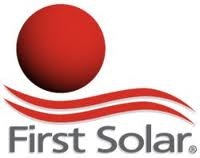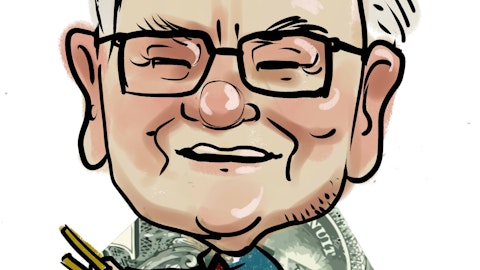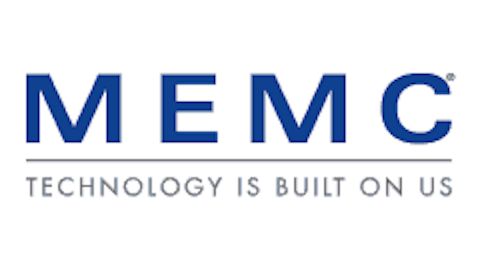Government and venture capital interest in alternative energy is declining. In response, some solar companies are changing their business models, moving up the value chain from photovoltaic cell manufacturers, to installers, to energy companies. Some are even repositioning themselves as electric power utilities.
This may seem like a refreshing change, but investors should require higher rates of return (deeper discounts) for new business ventures to compensate investors for higher risks.

Green Tech Funding on the Decline
Renewable energy ventures may have a hard time getting capital, as most venture capitalists and private equity companies that previously supported them are shying away. Capital provided for startups involving bio-fuel, wind, or solar energy dropped by about 34% in 2012. Some of the companies that have already reduced their investments in clean-energy ventures include Braemar Energy Ventures and Draper Fisher Jurvetson. Khosla Ventures founder Menlo Park indicates that the unavailability of capital providers is discouraging startups. According to Park, “All the fashionable VCs (Venture Capitalists) have gone away from it.”
The rush to reduce investments in renewable energy startups could be a precautionary measure considering that companies in the industry have been taking losses. Companies like Solyndra and A123 Systems crumbled even after the U.S. Energy Department had given $535 million and $132 million, respectively, to prevent them from failing. Government incentives have also been reduced, and that has seen many capital providers lack the motivation to support the industry. These issues have been reflected negatively in stock prices. New Energy Finance analyst Ethan Zindler explains how difficult it is to convince capital providers considering the losses being incurred and the reducing stock prices. According to Zindler, “Venture investors in early stages do not have the same access to capital they did five years ago.”
Kior and Gevo are some of the bio-fuel companies whose shares dropped in value after their IPOs, and as a result companies like Fulcrum BioEnergy have had to withdraw their IPO registrations. Braemar Energy Ventures managing partner Neil Sulsak highlights that it probably is not the best time to conduct IPOs or finance acquisitions. The poor market for solar panels will negatively affect the share prices and acquisitions of solar manufacturers. According to Sulsak, “Strategic sales have been driven often times by a strong IPO market.”
Solarcity’s successful IPO in December 2012 may be an indicator that all is not lost for the clean-energy industry. Its share price almost doubled since the IPO and the success could be because of their strategy. Most solar companies that made extensive losses were competing directly with Chinese companies in manufacturing solar panels, but Solarcity uses the cheap panels to develop solar projects. Investors will more likely fund companies with other profitable projects alongside solar panel manufacturing.
Large corporate investors are taking advantage of the disinterest in the clean energy industry. For instance, GlassPoint Solar is being funded by Royal Dutch Shell plc (NYSE:RDS.A), while Alstom SA is BrightSource Energy’s benefactor. GlassPoint is working on a project that could help Royal use sunlight to produce steam for use in oil recovery operations. Renowned investors like Warren Buffett have also been attracted to the industry. Through MidAmerican Energy Holdings, Buffett will be part of a $2.5 billion project to set up two solar farms in California. VantagePoint Capital Partners Chief Executive Officer Alan Salzman spoke about the increasing number of corporate investors that are venturing into this ailing industry. According to Salzman, “The area that we have seen a real spike in activity has been from the corporate world.”
SunPower Corporation (NASDAQ:SPWR) inked contracts to build two California solar projects for a MidAmerican Energy Holdings, a subsidiary company of Warren Buffett’s Berkshire Hathaway Inc. (NYSE:BRK.A). The company will receive between $2.0 billion and $2.5 billion in revenues for these of 579 MW projects. MidAmerican Energy Holdings will pay SunPower for designing, constructing, and installing the Antelope Valley solar projects.
Construction is scheduled for the first quarter of 2012 and is expected to be completed by 2015. The projects are thought to be the world’s largest photovoltaic power development projects. The projects would sell power under two long-term contracts to the utility Southern California Edison. The plants are part of California’s plan that would reduce emission greenhouse gases by 2020 to 1990 levels. Many more renewable energy projects would be needed to achieve the 2050 goal of an additional 80% reduction in emissions.
Many remain skeptical of SunPower as an investment. According to Raymond James analyst Marshall Adkins, the monetization of projects will not change the fact that SunPower retains a high-cost structure and razor-thin margins in respect to an extremely oversupplied market.
Unfortunately, the competition for building large-scale solar farms for utilities is heating up as more solar companies are jumping into these markets. For example, SolarCity does not manufacture solar panels, but instead helps customers finance and install systems. CEO Lyndon Rive indicated that demand was increasing. According to Rive, “We told investors that we sell energy, not equipment.”
Canadian Solar Inc. (NASDAQ:CSIQ) also plans to extend its operations to building and selling solar farms to utilities. Canadian Solar CFO Michael Potter said, “If you think about it, it’s a long-term bond at a higher yield because it’s an asset that generates income.” Canadian Solar hopes to get about $1.3 billion from the sale of projects being developed in Ontario.
Jenny Chase, Bloomberg New Energy Finance analyst, remains skeptical. She said, “I don’t think it makes sense for them long term – a manufacturer to be an owner of assets – it’s two completely different asset and capital requirements.”
Solar companies are not doing well:
| Ticker | Company | P/E | P/S | P/B | P/FCF | D/E |
| CSIQ | Canadian Solar | NA | 0.13 | 0.13 | NA | 2.56 |
| FSLR | First Solar | NA | 0.89 | 0.89 | NA | 0.15 |
| SPWR | SunPower | NA | 0.54 | 0.54 | NA | 0.74 |
| STP | Suntech Power | NA | 0.11 | 0.11 | NA | 2.84 |
| TSL | Trina Solar | NA | 0.29 | 0.29 | NA | 1.25 |
| YGE | Yingli Green Energy | NA | 0.25 | 0.25 | NA | 4.39 |
Companies do better in industries where free cash outflows and accounting profits are typical. In contrast, each of these solar companies is running a net losses and absorbing cash. (This is the source of the “NA” by their price-to-earnings and price-to-free cash flow ratios.)
All these companies are speculative. When you invest in any of these stocks you are betting that the cash reserves and credit of a company can outlast unfavorable economic conditions. Unfortunately, Yingli Green EnergyHold. Co. Ltd. (NYSE:YGE), Suntech Power Holdings Co., Ltd. (NYSE:STP), and Canadian solar are already financed significantly more by liabilities than by equity. This is precarious.
What about the solar stock with the least debt financing? First Solar, Inc. (NASDAQ:FSLR) has been the target of negative analysis by JPMorgan Chase & Co. (NYSE:JPM) analysts. They cited First Solar as a stock to avoid in 2013. JP Morgan Analyst Christopher Blansett said, “We see the issues currently plaguing the Solar PV industry—significant overcapacity and declining demand in Europe which historically has been the largest market—continuing in 2013.”
Solar stocks are speculative and some of them have traded at lower price multiples in the past. Investors should wait for solar stocks to trade at less than 50% book value with a debt-to-equity ratio under 1 before making a small speculative bet. SunPower is the only stock that is almost priced for such speculation.
The article Green Tech Funding Dries Up originally appeared on Fool.com and is written by Bill Edson.
Copyright © 1995 – 2013 The Motley Fool, LLC. All rights reserved. The Motley Fool has a disclosure policy.


